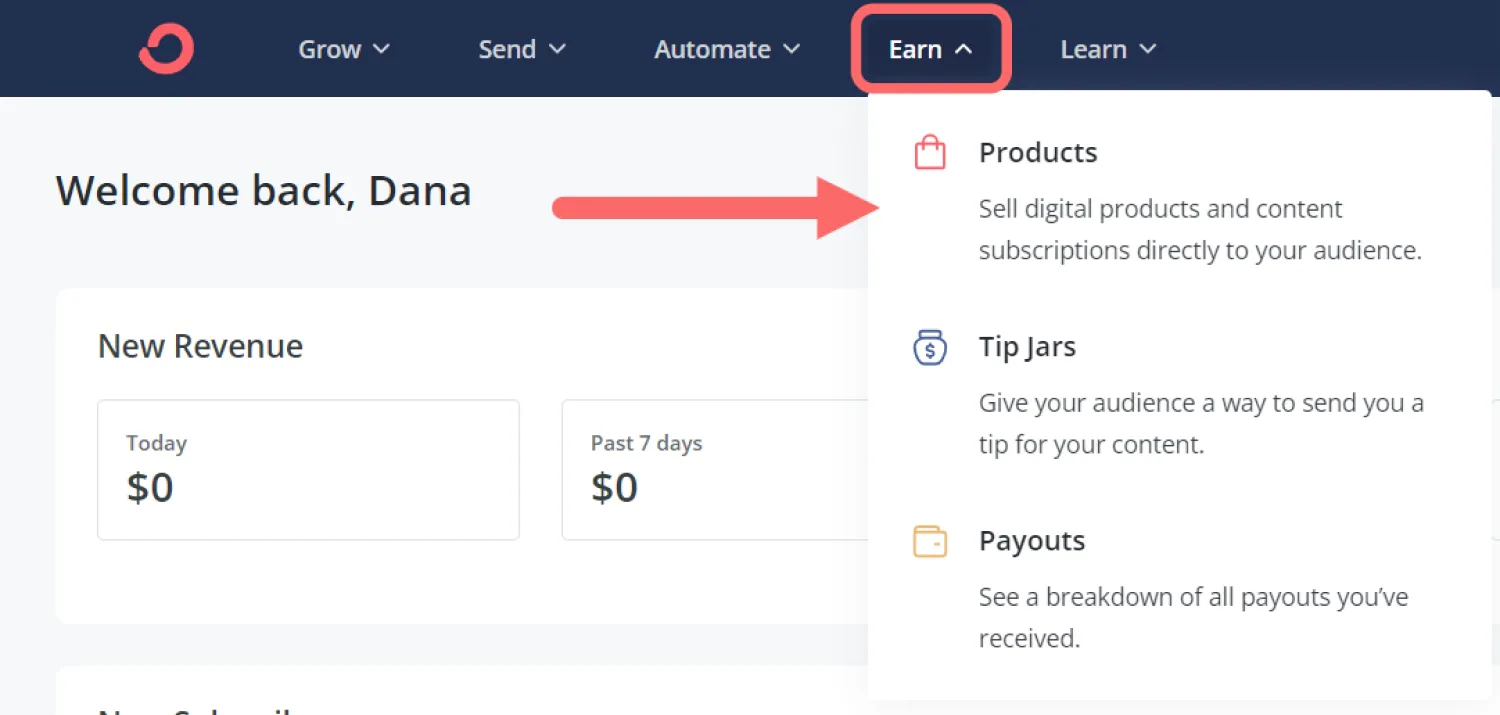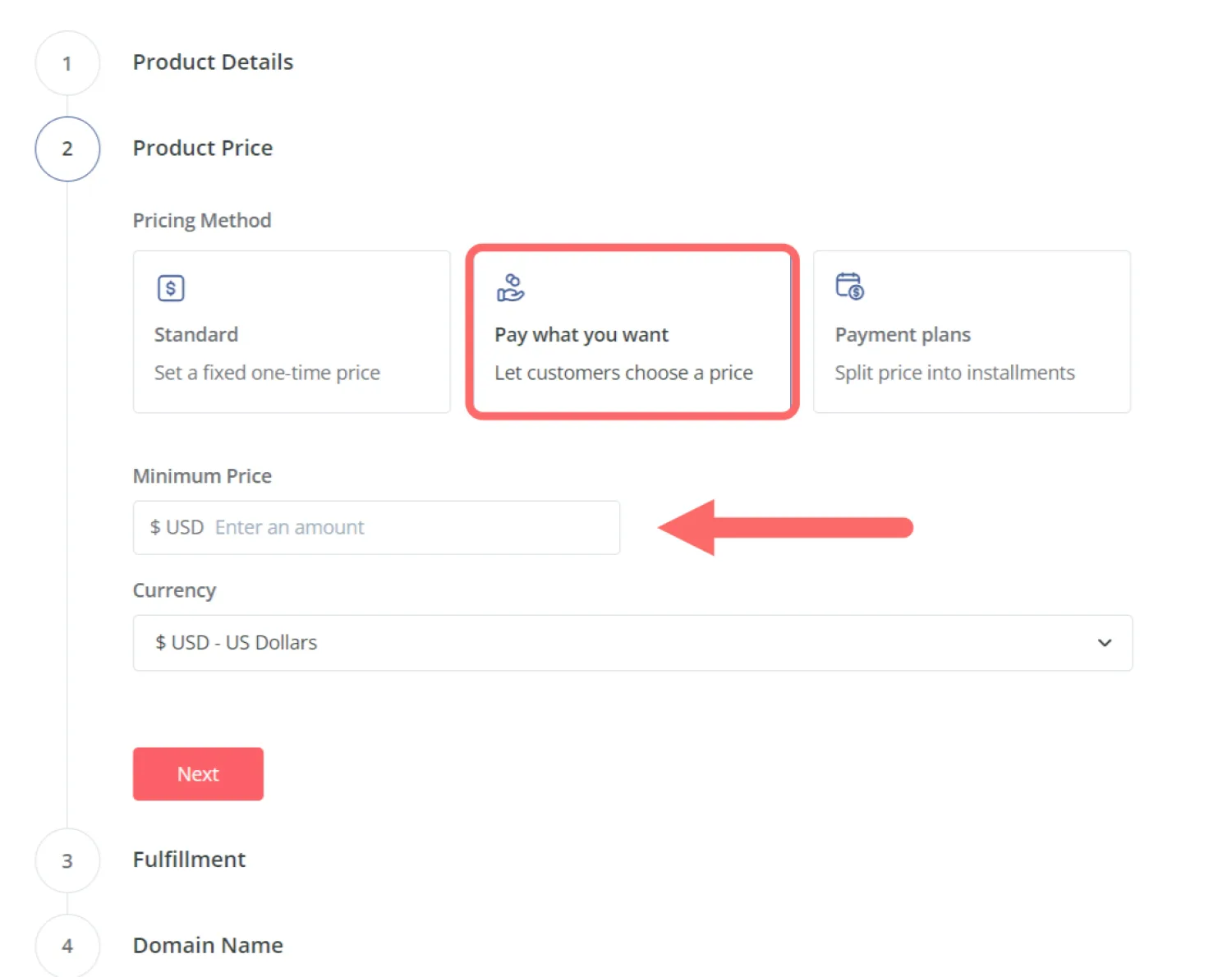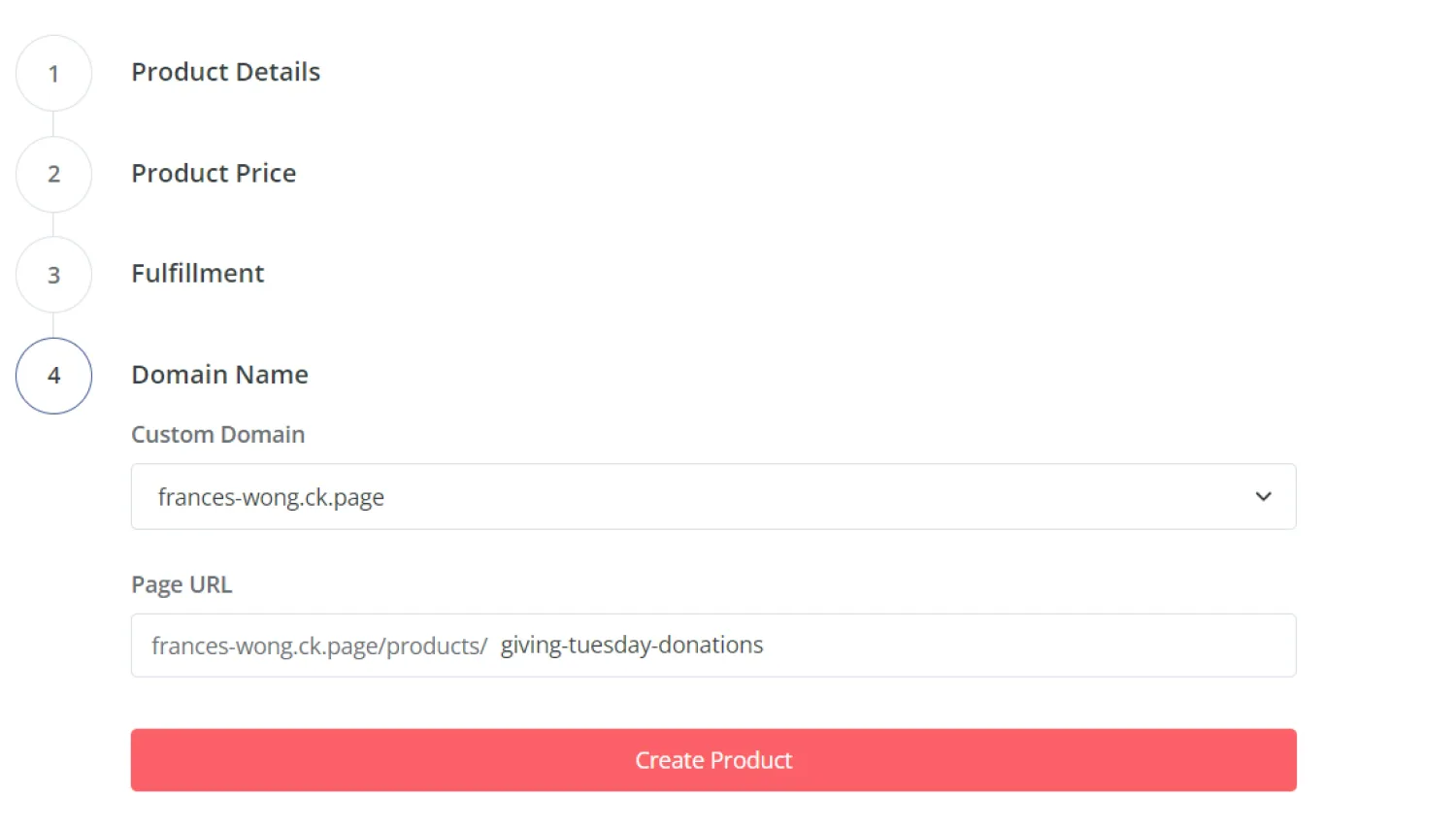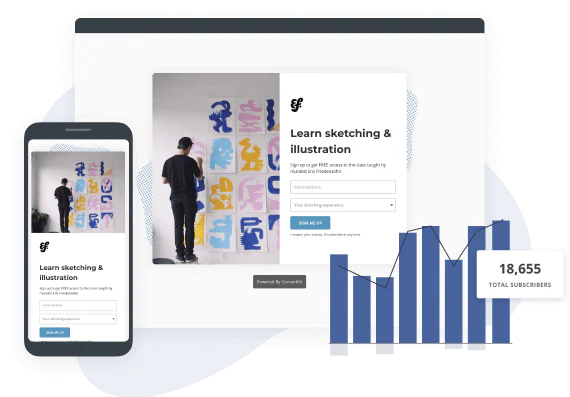In this Article
Your business is more than a source of income; it’s a platform for positive change.
Because even if you’re a team of one, you have the power to give back and make a lasting impact in your community.
And what better way to give back than by participating in Giving Tuesday?
Today, we’ll explore how you can put together an impactful Giving Tuesday email campaign to support the communities and organizations you love.
What is Giving Tuesday?
Giving Tuesday is the largest philanthropic day of the year. It was created by Henry Timms to encourage people to go out and do good deeds in their communities.
Timms was inspired to create Giving Tuesday as a way to reverse the hyperconsumerism that shadows Black Friday and Cyber Monday.
And since its creation in 2012, Giving Tuesday has become the largest philanthropic day of the year. In fact, in 2022, people raised $3.1 billion for their favorite causes in the United States alone.
But money isn’t the core value of Giving Tuesday, and you can still participate even if you don’t have spare change—over 76% of Giving Tuesday acts are non-monetary. Like helping a neighbor, making someone smile, or promoting a cause you care about.
When is Giving Tuesday?
Giving Tuesday is the Tuesday after US Thanksgiving and is the day after Cyber Monday.
Reasons for creators to engage in Giving Tuesday
It turns out, giving is like going to the gym. People who give feel happier, are less stressed, and have improved cardiovascular health.
But aside from personal health benefits, giving makes your community a better place.
And after the hustle of promoting your offers on Black Friday/Cyber Monday, it feels good to support your community.
Creators like Holly Singer, owner of the candle brand Milk Jar, make an effort to participate in Giving Tuesday each year. And each year, she finds different local charities to shine a light on.
Like Holly, you can also start a Giving Tuesday campaign to improve your community.
Best practices to cultivate generosity on Giving Tuesday
Tip #1: Open with an attention-grabbing subject line
Make sure your subject line grabs your subscribers’ attention so they open your Giving Tuesday emails.
To do so, use strong words or phrases that tap into the emotional appeal of Giving Tuesday. For example, “Transform lives with your donation” or “Be a hero this Giving Tuesday.”
With an attention-grabbing subject line, you’ll increase the chance that people will open your email, read it, and ultimately give to your cause.
Giving Tuesday email subject line examples
- Your Gift, Your Impact – Alberta Ballet
- can we skip to the GOOD part? – Pixistock
- It Feels Good To Give Back 🧡 – AfterShokz
- Why we give – Leesa
- This #GivingTuesday, make history with us! – Charity Water
Tip #2: Reveal why you’re supporting your cause
Your email should dive into the reasons you’ve decided to participate in Giving Tuesday (and in turn, why your audience should, too).
Spend time reflecting on why you’re lending a hand to various individuals or organizations.
In most cases, there’s a story behind your why. Don’t be scared to tell your audience that story.
If you’re unsure what your story is, consider sharing:
- How you found this organization
- What inspired you to create a Giving Tuesday campaign for this organization
- How this organization has impacted you personally
Sharing stories taps into our emotions, and by sharing your story, you can elicit an emotional response from your audience. By making them feel those same emotions you feel, you can increase the likelihood of them donating to your cause.
Giving Tuesday sample email: The Nue Co
Supplement company The Nue Co uses their Giving Tuesday email to discuss who they’re donating to and why. This humanizes their campaign, making it relatable and emotionally engaging for their audience.
Plus, they smartly tie the why back to their mission, so subscribers can see the alignment between The Nue Co and their chosen charity.
The Nue Co also highlights stats so readers understand the need for their donation. Like how 785 people live without clean water.
Tip #3: Untie your brand from the campaign
While you might want brand recognition for your Giving Tuesday campaign, Giving Tuesday creator Henry Timms says the most success happens when you untie your brand—and yourself—from the outcome.
This way, you can focus 100% of your energy on your campaign. And your audience will find the campaign more authentic.
So, what does this look like?
For starters, make your chosen organization the star of your Giving Tuesday emails.
Then, use your email to highlight the organization. Avoid talking about your products and services and shift the narrative toward the cause you’re championing.
Giving Tuesday example email: AfterShokz
Retailer AfterShokz uses their Giving Tuesday emails to prominently feature three organizations they want their readers to support.
Each organization has a large logo with a brief description so readers can get to know each one before choosing which to support.
Tip #4: Make donating easy with a clear call-to-action (CTA)
Make donating easy by stating what you want people to do and how they can do it.
If you’re asking for donations, your CTA might read, “Donate Now.”
If you’re encouraging people to volunteer your CTA could say, “Enroll to Volunteer.”
Then, ensure your CTA stands out by using bold colors or big buttons. And include your CTA near the top of your email. This way, readers won’t miss your CTA and will be more likely to follow through on your ask.
Giving Tuesday email sample: Alberta Ballet
Alberta Ballet uses their CTA button to communicate what they want subscribers to do: make a gift.
And because they included the CTA right away, readers don’t need to scroll to see it.
Tip #5: Describe the impact of each donation
Show your audience the power they have—and motivate them to give—by describing the impact of each donation in your Giving Tuesday email.
Since the average one-time donation is in the $100 range, explain the impact of different levels of donations up to ~$100.
For example, what will $5 do? What about $50? Tying an impact to a monetary amount shows donors the concrete result of their donations.
It also increases trust. By being transparent, donors know how the organization will spend their money.
Giving Tuesday impact email example: Canadian Geographic
The Royal Canadian Geographical Society describes how different donations, ranging from $5 to $100 per month, helps their cause.
They tie actionable results to each dollar amount so donors feel confident about their donation, no matter which amount they choose.
Tip #6: Keep your audience in the loop
Sending progress emails taps into a psychological phenomenon that can increase your donations.
This is because people perceive their contributions as more meaningful when campaigns approach their donation goals.
By sending progress updates, you can share just how close you are to reaching your goal. As people watch you near the finish line, they’ll feel more inclined to donate.
Progress emails are also beneficial for those who have already donated. Current donors will feel proud knowing they contributed to a growing Giving Tuesday campaign.
Giving Tuesday progress email example: Leesa
Although Leesa’s Giving Tuesday campaign extends year-round, they’re a great example of a brand that showcases the progress of their efforts.
Leesa highlights a variety of ways their customers have made a difference, like the number of mattresses donated and the number of trees planted.
When people see this progress, they may be more compelled to take part in their initiative.
Tip #7: Don’t forget to say thank you
After Giving Tuesday ends, thank your audience for their donations and support.
Even better, reach out to the organization you raised money for. Ask if they have stories you can share that highlight the impact Giving Tuesday had on them.
Share these stories with your audience in your “thank you” email so they know how the organization used their donation.
How to set up your Giving Tuesday email campaign
Let’s go over a few email marketing best practices for your Giving Tuesday campaign.
1. Outline your Giving Tuesday campaign
The easiest way to outline your campaign is to use the 5Ws 1H framework (what, who, when, where, why, and how):
- What: What’s your goal for your Giving Tuesday campaign?
- Who: Who are you giving to, and who is involved?
- When: When will your campaign take place?
- Where: Where will you promote your campaign?
- Why: Why are you participating in Giving Tuesday?
- How: How will you achieve your goal?
Answering these questions gives you a solid foundation to build your campaign.
2. Make sure your campaign complements your brand
Your brand should complement your campaign. Otherwise, it will feel inauthentic.
Ashlee Sang has over a decade of experience working in fundraising.
She notes that why you want to support a specific cause is an essential component of building a thoughtful donation campaign:
If the brand has never mentioned their values before, the causes they care about, or their founder’s story, then a fundraising campaign is going to fall flat. It might even come across as performative or inauthentic.
But when businesses lead with their values in everything they do, from their partnerships to the email signatures and everywhere in between, their audience will be attracted to them because of their values and will likely want to support the same types of causes.
– Ashlee Sang
As you reflect, take Ashlee’s advice and see how you can weave elements of your why into your brand. It’ll make for an authentic Giving Tuesday campaign.
3. Build a Giving Tuesday landing page
Your landing page is your chance to make a powerful statement and inspire action. It’s what people will view right before they choose to donate. Use compelling visuals and persuasive language to grab your audience’s attention.
Highlight stories of how the organization you’re supporting has changed lives and improved your community. Consider adding testimonials, before and afters, stats, and other proof to demonstrate how a donation will make a big impact.
Ask for donations with the Pay-What-You-Want feature
Use Kit’s Pay What You Want feature to collect donations. You can include set amounts or let your audience choose their own amount.
This gives your audience the opportunity to donate any amount they’re comfortable with.
To set up Pay What You Want in Kit, head to “Earn” > “Products”.

Then click the “+ New product” button.
Fill out your product details (in this case, your product is your donation collection).
Under the “Product Price” section, select “Pay what you want”.
You can enter a minimum price. Leave the minimum price blank—otherwise, people will have to donate a minimum amount, and for donations, you want people to choose how much to give.

Continue following the prompts, and when you’re finished, click “Create Product”.

On the next page, customize your product’s page by entering a brief description of the organization and why people should consider donating. Like this product page that collects donations for the Secret Blue Butterfly:
4. Set up your Giving Tuesday email sequence
Now you need a way to tell people about your cause and drive traffic to your landing page.
You should send a total of five emails for Giving Tuesday.
But not all at once. It’s best to space your emails out and send them over several days. Doing this gives subscribers time to learn about your cause and decide how much they want to donate.
And don’t worry about remembering to send each and every email. With Kit’s automations, you can schedule every Giving Tuesday email.
Follow this sequence for your Giving Tuesday email campaign:
- Giving Tuesday pre-launch email: Send your Giving Tuesday pre-launch email two days before Giving Tuesday. In this email, introduce your audience to your cause, why it’s important to you, and how much money you hope to raise.
- Giving Tuesday launch email: Send your Giving Tuesday launch email early in the morning on Giving Tuesday (most people wake up around 7 a.m.). Include a strong call-to-action (CTA) that points to your landing page. Considering sharing a personal story of your experience with your cause.
- Giving Tuesday progress email: Send your Giving Tuesday progress email around noon. This is the halfway point where you share how the campaign is going.
- Giving Tuesday last call email: Send your last call email around 7 p.m. before your audience unplugs for the night. Include a progress report to capture any last minute donors who want to help you reach your donation goal.
- Giving Tuesday follow-up/thank you email: Send your Giving Tuesday follow-up email the next morning to share the results of your campaign with your audience and thank subscribers for their help.
5. Launch and promote your Giving Tuesday campaign
Black Friday and Cyber Monday may hog the attention leading up to Giving Tuesday, but that doesn’t mean you should forgo any promotion before the event.
It’s a good idea to talk about your Giving Tuesday campaign before it occurs to create buzz with your audience, so they’re familiar with the cause you’re supporting. Try these ideas:
- Add banners to your website
- Create posts for social media
- Write a blog post about your cause (and add an opt-in form so readers can sign up to learn about your campaign when it’s live. This way, you can grow your email list in the process.)
- Team up with another creator and cross-promote your Giving Tuesday campaigns on each other’s social media accounts
- Add opt-in forms to existing blog posts
No campaign is too big or too small for Giving Tuesday
This quote from the GivingTuesday organization sums up what Giving Tuesday is all about:
It’s a simple idea: whether it’s making someone smile, helping a neighbor or stranger out, showing up for an issue or people we care about, or giving some of what we have to those who need our help, every act of generosity counts and everyone has something to contribute toward building the better world we all want to live in.
No matter the size of your audience or how much you have to give, there are plenty of meaningful ways to participate in Giving Tuesday.
You don’t need to plan a flashy campaign to make a difference. Start small and watch as your campaign puts good back into your community.
Ready to create your Giving Tuesday campaign? Use Kit to help you each step of the way!












